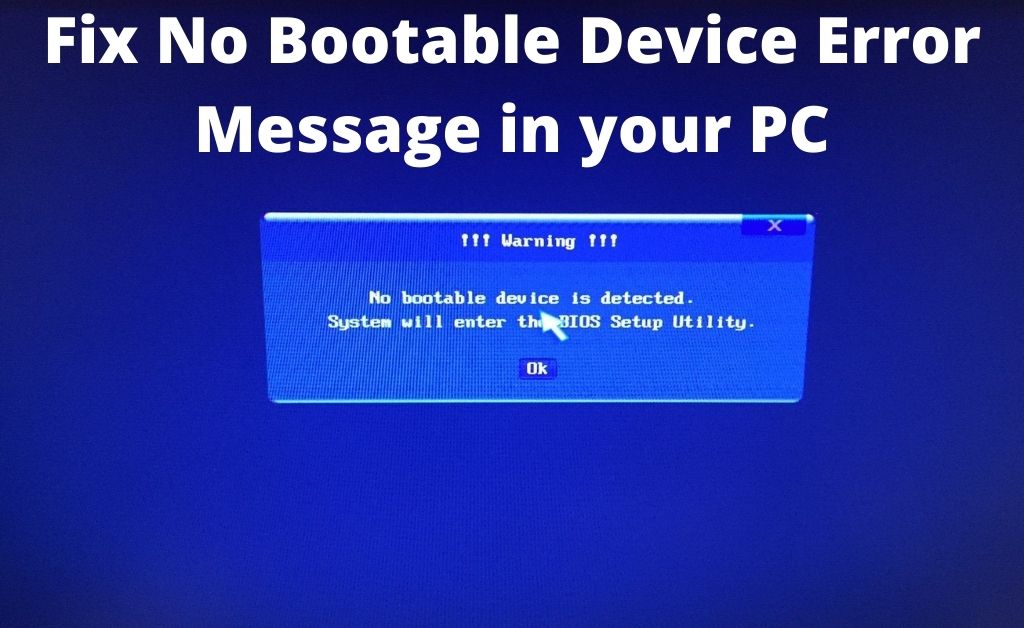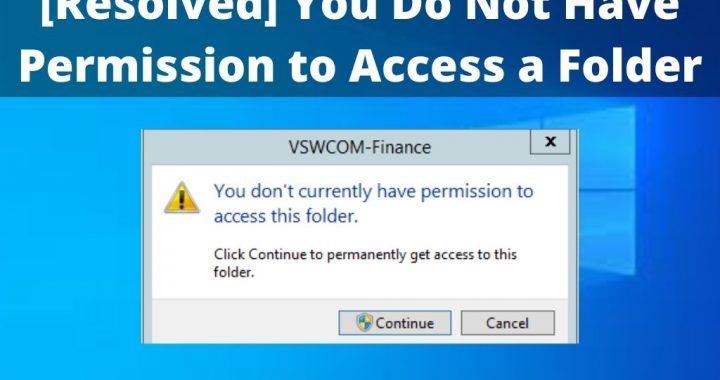7 Methods to Fix No Bootable Device Error Message in your PC

The bootable storage device only comes in handy when you are planning to format your computer. After connecting the storage drive, if you encounter the “no bootable device” message, then it might have encountered a fault. On the other hand, if your computer is not turning on at all, then the issue is quite serious and you need to act fast to resolve it.
Pressing the F1, F2 or F10 key will open the BIOS and there you can witness the same message. This means that there is an issue with the BIOS. So, what’s the reason behind it?. The probable reasons are bootable storage device errors, corrupted hard disk drive, corrupted operating system, and others. It’s better not to waste any time and opt for the troubleshooting processes that are given below.
-
Reboot the Computer Normally
When the “no bootable device” error message appears on the screen, plug out all the cables connected with the computer. Wait for some time and then attach the cables to the electrical socket board, as well as to the computer. Now, try to boot from the storage device.
If this process doesn’t work, then you have to alter the boot order in the BIOS. Get to the Boot tab and change the CD-ROM drive to Removable Storage. Hopefully, now your system will boot with the help of the removable storage device.
-
Discover and Repair the HDD Bad Sectors
“No bootable device” error message can appear when there are bad sectors in your system’s hard disk drive. Start your computer in safe mode, and with the help of the dedicated hard disk drive checker, you need to check the drive for any errors. There will be two options – One is the “Automatically fix file system errors” and the other is “Scan for and attempt recovery of bad sectors”. Your first step will be to scan and then choose the fixing process.
-
Format the HDD Primary Partition
Here, the computer repair procedure will come in handy and the storage device is required. Plug it into the system and choose to Repair your computer. Now, here the options will be different according to the OS that you are planning to install. If it’s Windows 7, then the option will be System Recovery. For Windows 8 and 10, choose Troubleshoot, and then select Command Prompt.
After the Command Prompt opens, place the following commands as they are given below:
list disk
select disk 0
list partition
select partition 1
active
After the format is over, restart the computer, insert the bootable storage device and try to install the OS.
-
Check the HDD Status
Hard disk errors can also lead to the appearance of the “no bootable device” message on your computer screen. Therefore, in Windows, there is a sophisticated tool that will help you to check the status of the system hard disk drive, it’s the Check Disk tool (chkdsk.exe). Type chkdsk.exe in the Cortana bar and you will get it in the list with the help of the predictive text function.
With the assistance of the Command Prompt, write down “chksdk c: /f /e /d”. Now, your job is to wait and do not interrupt the process. Carefully go through all the on-screen prompts and check the status of the hard disk drive.
-
Repair BCD and MBR
The BCD and MBR, both act as the backbone of the boot function in your computer. Without this two sub-function, your computer will neither boot nor load the OS in the system memory. On the other hand, if it’s infected with viruses, then the situation is very much critical resulting in a “no bootable device” error message. Thus, with the help of the Command Prompt, you have to take the necessary steps.
“bootrec /fixmbr
bootrec /fixboot
bootrec /scanos
bootrec /rebuildbcd”
Hopefully, these above commands will fix the error that is taking place while you are trying to load the new OS.
-
Retrieve the Deleted Boot Partition
Every hard disk drive in your computer has a recovery partition that helps to load OS. If the partition is hidden, then the “no bootable device” error can appear. So, you have to bring back the partition at any cost to proceed. The best way to recover is to take the help of any third-party application. Go through the application, carefully follow all the steps for a successful recovery.
-
Scan your PC in Safe Mode
No matter in which condition your computer is, the safe mode helps you to access the user interface. Get to the safe mode at first, after that, scan your entire system to detect viruses. Once found, delete them from your computer permanently. Now, reboot the system and once again, try to load the OS from the bootable storage device.
Lastly…
There might be an issue with the bootable storage device also if the above solutions don’t work. Therefore, checking the bootable device is equally important. Take the help of some other computer, insert the storage device. If the autoplay option doesn’t appear, move to the My Computer or This PC.
The storage bar will appear in the drive, denoting how much storage space is consumed. If the color is red, then the storage device is running out of memory, and it’s not that critical issue at all. Now, right-click on the drive to access the properties.
Check the storage type. Generally, the tech experts suggest that the NTFS format is very much suitable to create a stable bootable storage device. If the format is FAT 32, change it to NTFS and perform a Quick Format. The process will take just a few seconds to complete.
Lastly, with the help of a third-party application, transform the storage device into a bootable by burning the OS image file. Hopefully, this procedure will definitely work.

 What to Do When You Do Not Have Permission to Access a Folder on PC?
What to Do When You Do Not Have Permission to Access a Folder on PC?  7 Methods to Fix: Alt+Tab not Working on Windows 10
7 Methods to Fix: Alt+Tab not Working on Windows 10  How to Deal with Kernel Mode Heap Corruption Error?
How to Deal with Kernel Mode Heap Corruption Error?